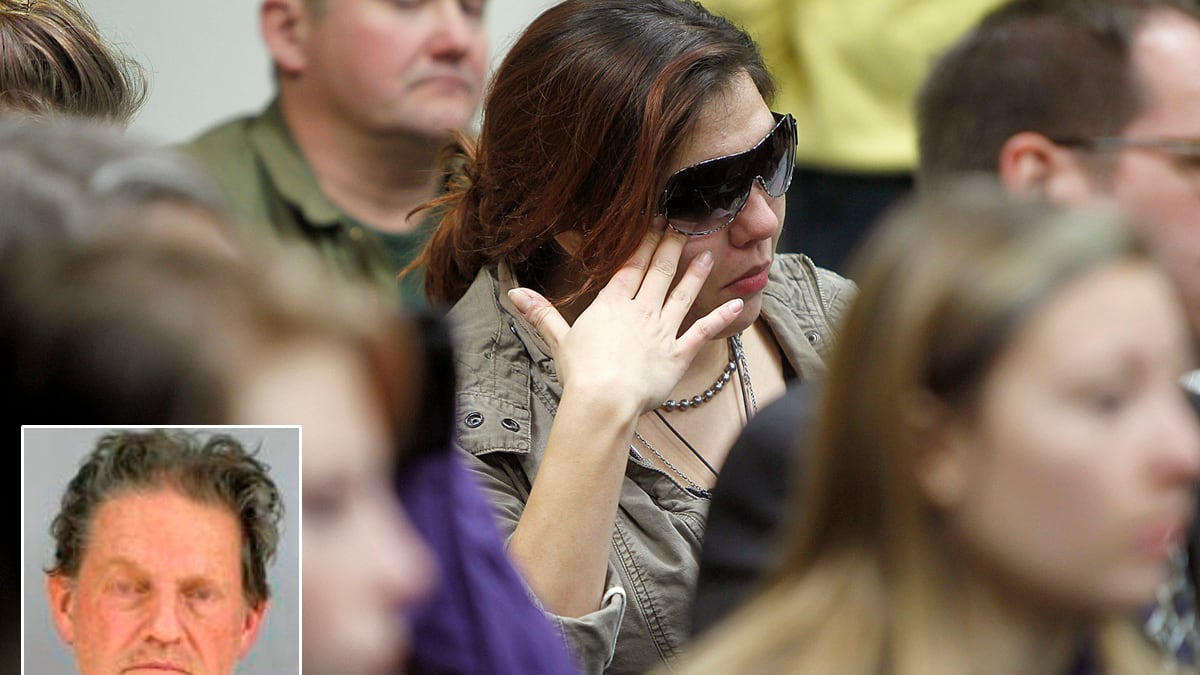Had he stopped shooting after they were on the ground—stopped with blasts from his Mini-14 rifle packing .223-caliber ammunition, the same rounds U.S. forces use in Afghanistan and Iraq—Byron David Smith might still be a free man.

But Smith, a 64-year-old retired State. Dept technician, didn’t stop there, say Minnesota authorities. He shot the two teenaged intruders who crept down the stairwell into his basement on Thanksgiving day until they were both dead.
That’s the obvious part about last week’s killing of 17-year-old Nicholas Brady and 18-year-old Haile Kifer, gunned down after they allegedly broke into Smith’s home in the 8,000-population town of Little Falls, in central Minnesota. Had Smith only fired two shots that day—one at each of the intruders—no one would question his right to do so. Minnesota statute 609.065 allows “the intentional taking of the life of another” if “resisting or preventing the commission of a felony in the actor’s place of abode.” It’s been that way since 1969. Smith had a right to shoot, and he had a right to shoot to kill.
“We understand that right. We respect that right. We know that right exists,” said Morrison County Sheriff Michel Wetzel in a press conference following Smith’s arrest.
Now Smith is in jail, facing charges of second-degree murder, and while what happened in that basement while people across America were whipping up mashed potatoes might sound clearly to some a case of “cold-blooded” murder, as County Attorney Brian Middendorf later described it, the right to self-defense is actually a very complex topic, and its laws vary state-by-state.
First, the facts, at least those described in a criminal complaint filed by Middendorf and reviewed by The Daily Beast: Smith was by himself in his home around midday on Thanksgiving, “sitting in his basement,” he told police. He heard footsteps, then a window breaking upstairs, then more footsteps down the hallway. Smith looked up to see a person walking down the stairwell into the basement, aimed his rifle, and shot that person, who turned out to be 17-year-old Nicholas Brady. Brady fell down the stairs, at which point he was looking up at the homeowner. Smith shot the boy in the face, he told police, explaining, “I want him dead.”
Smith then dragged Brady’s body on a tarp, into the basement workshop, he told police, and sat back down in his chair. A few minutes later came more footsteps, down the stairs and into the basement. Smith waited “until he could see her hips” and fired again, at which point 18-year-old Haile Kifer tumbled down the stairs. He tried to shoot her again but the rifle jammed, at which point he claimed the girl laughed at him.
“Smith acknowledged this made him upset,” according to the complaint. “Smith told (the investigator) ‘If you’re trying to shoot somebody and they laugh at you, you go again.’” So he reached for the .22 caliber revolver strapped to his chest, aimed it at the girl, and shot her in the chest “several times,” with “more shots than I needed to,” according to what he told police.
Then, as Kifer lay gasping for air, Smith put his handgun under her chin and shot her—his words—“under the chin up into the cranium… a good clean finishing shot” to end her suffering.
At some point, legal experts who have reviewed the case told The Daily Beast, Smith was acting in self-defense, in full accordance with Minnesota law. The Little Falls sheriff, in a press conference this week, did his best to clarify the point at which he believed Smith stepped over the line.
“There’s a great deal of confusion that can occur in a case like this,” he said. “People are going to wonder what can we do and what can’t we do to defend ourselves.”
The use of force must be “reasonable,” the sheriff explained.
But what’s reasonable? How many shots could Smith have fired and still avoided charges? The sheriff said “there’s no bright-line test about how many shots or how much time…When it becomes clear there is no longer a threat to you, you are no longer entitled to take life.”
At first, that decision about whether a threat still exists is up to the crime victim, legal experts say—the person exercising self-defense. But when the cops get there, they’ll also make a decision about what’s reasonable, and then a prosecutor will, and then a judge will, and then a jury, if the case gets that far.
Smith told police he saw no weapons on either of the alleged burglars, but he also said “he was fearful the entire time that they might have a weapon.” If he could convince a jury that fear was real, he might have a self-defense case, says Joe Olson, a law professor at Hamline University in Saint Paul said. But he’d have a tough time doing so, given what he told police.
“He could make a claim the guy was scrambling under his jacket, ‘I thought he was trying to pull out a gun to continue the fight,’ that the fight was still on,” Olson said. “But that’s not what he said. So he’s got no chance of making a self-defense claim.”
Not in Minnesota, anyway. In Florida, or other states with so-called “Stand Your Ground” laws—also known as “Castle” doctrines (as in “my home is my castle”) a jury might never have gotten to consider a case like Smith’s.
“It’s possible he might not have even been charged here,” said Joelle Moreno, a professor of law at Florida International University’s school of law and a member of the statewide task force that made recommendations to alter the Sunshine State’s Stand Your Ground law in the wake of George Zimmerman’s shooting of unarmed teenager Trayvon Martin in March. “Just by virtue of those teenagers entering his home, the fear of imminent deadly force was reasonable. Just because they broke into his home, that’s all you need [in Florida].”
With Stand Your Ground, once that fear is deemed reasonable by a judge, a shooter becomes completely immune from both criminal and civil prosecution. Still, the question remains: at what point does it become unreasonable to feel at risk of imminent harm?
Florida defense attorney Jay Hebert was the first to try a “stand your ground” case in Florida. He told The Daily Beast that having such a law in Minnesota might strengthen Smith’s defense by adding another hurdle for prosecutors, but that it probably wouldn’t change the ultimate outcome once charges were brought against him.
“The problem is, when the guy’s down, he’s no longer a risk,” Hebert said. “At that point, the right to use deadly force is now gone.”
Each shot is analyzed in court, Olson said, each to determine whether that shot ended the threat. And to accomplish that, they’ll surely use the statements Smith allegedly made to police: that he shot Kifer not because he was afraid but because she laughed at him and with “more shots than I needed to,” that he shot Brady not because he was afraid but because “I want him dead.”
Smith’s attorney did not return a request for comment from The Daily Beast; it’s unclear whether he’ll try to employ self-defense in court. If he does, experts say, it’ll be hard to pull off.




